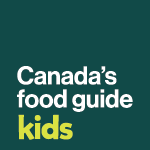Explore ways to connect Canada’s food guide to core knowledge and skill subjects. Exposing children to a variety of foods can help them become familiar with these items and provide opportunities for natural conversations about food and eating. Try these additional learning activities to support learning.
Tip: These activities are intended to support children’s learning in a variety of settings. They should not be interpreted as curriculum. Visit your province or territory’s ministry or department of education for information on curriculum.
On this page
Arts
As a group, challenge children to dance and move their bodies in different ways to describe food. For example, ask children to:
- wiggle like spaghetti
- roll around like a carrot
- stand up tall like broccoli
- sizzle like an egg in a pan
Science
As a group, discuss with children the different seasons in Canada. Create a chart that illustrates the types of foods that grow each season and explore these foods together. For example:
- Spring: rhubarb and cabbage
- Summer: corn and peaches
- Fall: pumpkins and apples
- Winter: carrots and potatoes
Mathematics
Provide children with a variety of food items. These can include:
- macaroni
- blueberries
- beans, dried
- carrots, sliced
Ask children to create patterns with the food items or classify them in different ways. For example:
- shortest to longest
- lightest to heaviest
Social studies
Brainstorm with children the different types of people and places in the community that grow or sell food. For example:
- farmers
- markets
- grocery stores
Ask children to write a thank you card or draw a picture for one of these people or places. If possible, take the group to visit the people or places to give them the cards or pictures.
Language arts
Read a story about growing or preparing food and have children use puppets or props to retell the story.
Physical education
Set up three baskets or containers labelled "vegetables and fruits", "whole grain foods", and "protein foods", with images to provide examples of these foods.
Provide bean bags in three different colours and assign each an associated food type and locomotor skill, for example:
- yellow for protein foods equals jumping
- purple for whole grain foods equals skipping
- blue for vegetables and fruits equals running
Invite children to collect a bean bag and practice the associated locomotor skills to move the bean bag to the appropriate basket. Modify the locomotor skills for your group as required.
Second language studies
Share with children some of the names of the foods from the food guide snapshot in another language.



